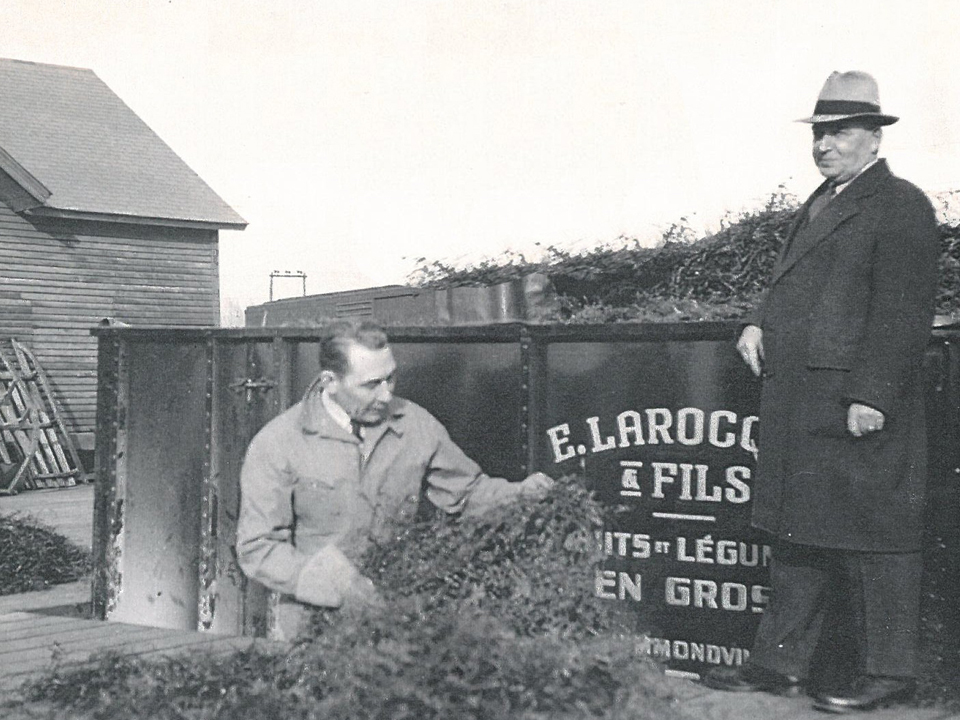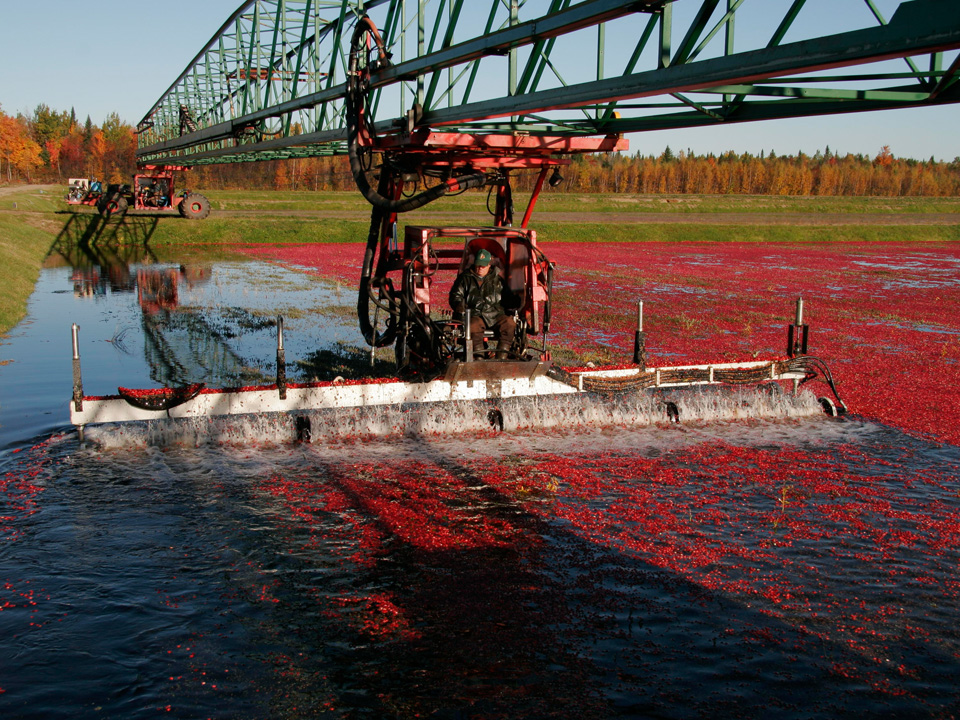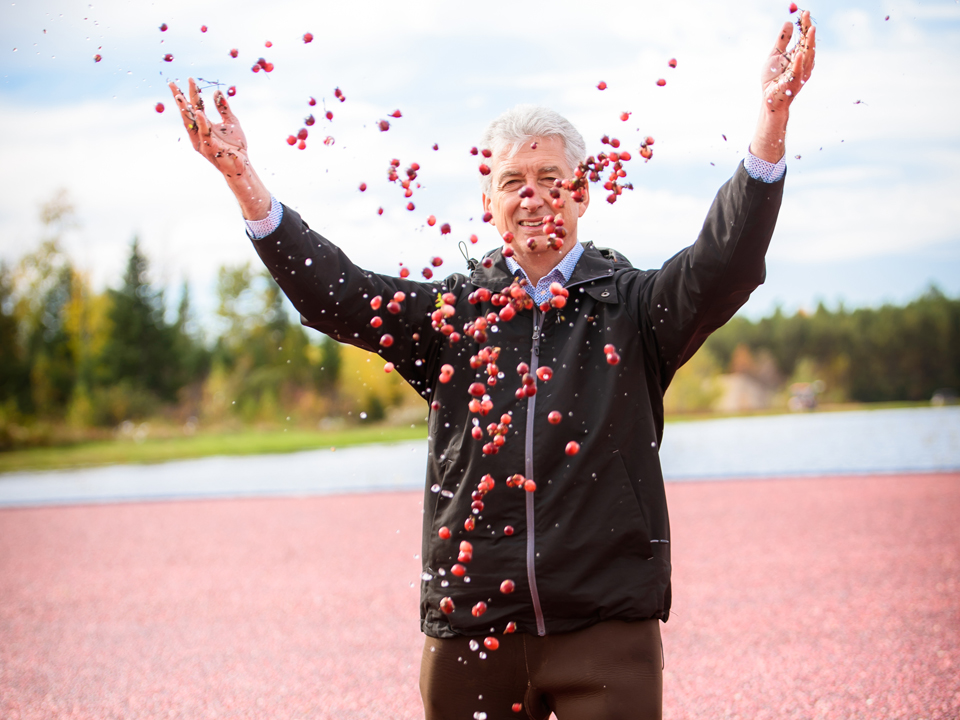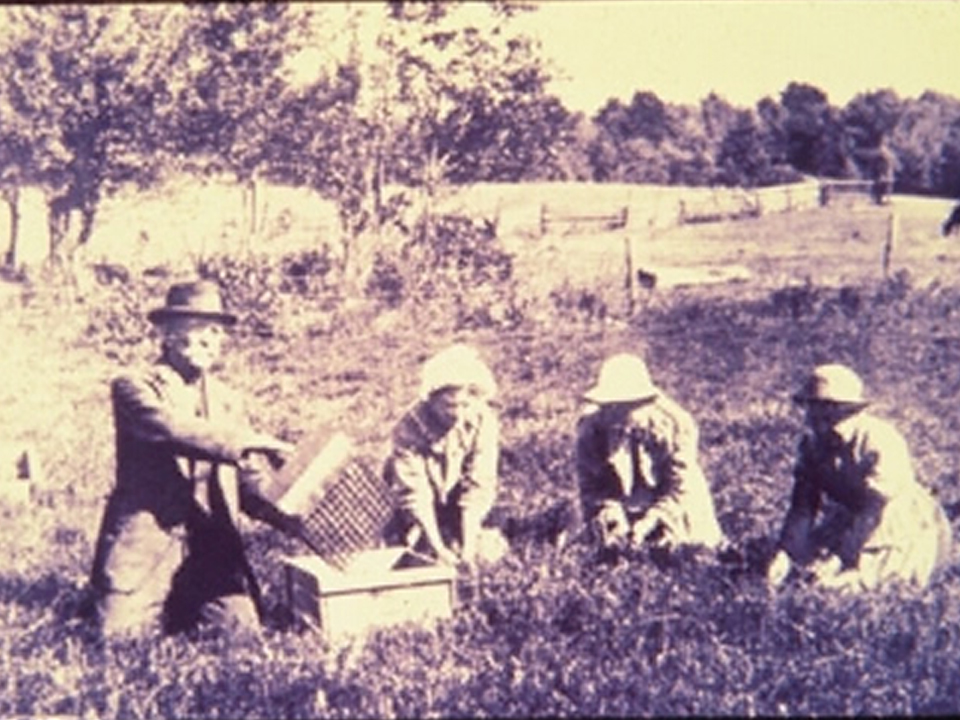
Cranberries
History
The wonderful history of cranberries
An indigenous plant, cranberries were found in the wild, mainly in wetlands, from eastern North America to the state of Wisconsin long before industrial production began. During colonization, the Native Americans and indigenous peoples were already using the fruit as a remedy to help French colonists recovery from scurvy. Cranberries also served to dye clothing and help preserve food as it was crushed into pemmican (a type of grease) and wrapped around dried meat.

Edgar Larocque
In 1939, Mr. Edgar Larocque introduced cranberries in Lemieux, located in the Centre-du-Québec region after many visits to see family in Massachusetts. As a fruit and vegetable wholesaler, he was interested in cranberry production in that region and decided to import vines to Quebec. That proved to the birth of cranberry production in Quebec. The cranberry farm, Les Atocas du Québec is now operated by the 3rd generation of the Larocque family, Louis-Michel, Edgar’s grandson, thus preserving its development. Before Louis-Michel took charge, his father, Charles Larocque managed the farm beginning in 1950 and in 1954 integrated as a member of the Ocean Spray Cooperative.

Marc Bieler
In 1984, Mr. Marc Bieler began developing what would become the largest cranberry farm on one site in the entire world, located in Saint-Louis-de-Blandford. First an apple grower near Dunham, Quebec, Mr. Bieler started getting requests for cranberries from his clients. So, he decided to start growing them. Today, Canneberges Bieler extends across 1,400 acres in Saint-Louis-de-Blandford. Several years later, in Manseau, Mr. Bieler founded the transformation plant Atoka, which has recently been acquired by the Ocean Spray Cooperative.

Martin Le Moine
Industry leader in Quebec organic cranberry production, Martin Le Moine started his first farms at the end of the 1980s in Notre-Dame-de-Lourdes, in the Centre-du-Québec region. Early in the 2000s, he founded the transformation company, Fruit d’Or which has gone one to become one of the largest organic agri-food companies in Quebec. In 2018, Quebec is home to more than one-third of the world’s production of organic cranberries.
Rapid evolution
Though at the beginning of the 1990s there were about a dozen cranberry growers, by 2012 the number of cranberry farms as well as the acreage in production had more than tripled. Because production developed and increased at such a rapid pace, Quebec has held 2nd and 3rd place interchanging with the state of Massachusetts for these positions. Wisconsin remains the #1 growing region in the world. In Quebec, cranberry production is undertaken in 6 regions, however we find 60 of the 80 cranberry farms in the Centre-du-Québec region alone. Cranberries are, without a doubt, the region’s flagship product and as the production developed, so did treatment facilities to transform and freeze cranberries that also contribute as an economic engine for the region.

Origins of cranberry production.
Sometime around 1816, Capitan Henry Hall of Massachusetts began to transplant cranberry vines in the sand and noticed that they developed well. Over the years, cranberries became the main growing crop in that state and now is the official state berry.
Around 1860, Edward Sackett originally from New York state, discovered 700 acres of cranberry vines growing in a wild state in the marshes of Wisconsin. He then decided to develop this crop, which has become over the years, the #1 fruit crop in Wisconsin, making it the number one growing region in the world. The cranberry is the official state fruit of Wisconsin.
